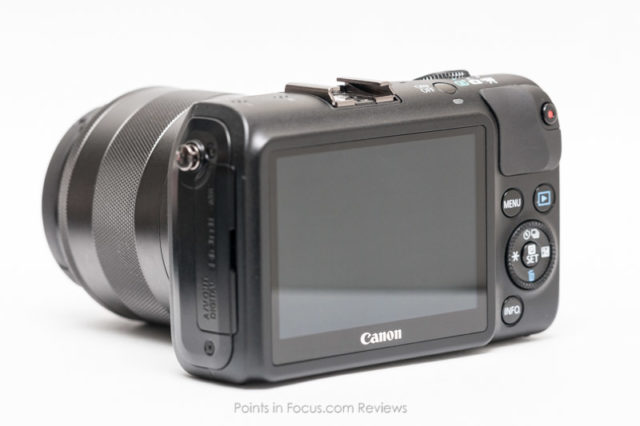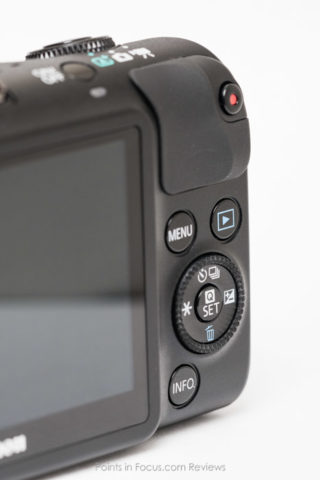Canon EOS M – First Impressions
There are two things that can be said about both Canon and myself, neither of us were first to jump on the mirrorless camera bandwagon, and neither of us seem to be ready to fully embrace mirrorless cameras either.
Their foray into the mirrorless market so far has been nothing short of cautious with a side of troubled. The EOS M was released in June of 2012, along with 2 lenses, an EF lens adapter, and a flash. A third lens, the EF-M 11-22mm f/4-5.6 IS STM has been disclosed but not officially released, and there are some indications it may not be released in the US.
Topping off the lack luster push to get things out on the platform, the camera itself at release wasn’t a completely unblemished product either. Namely, autofocus performance was atrocious. In fact, that poor autofocus performance was a significant reason why I had zero interest in the EOS M for as long as I did.
So what changed my mind? First was a firmware update that brought the EOS M’s AF performance into the realm of acceptable. The second was a massive sale Canon was running with a near 50% discount. For the same price as a PowerShot S110 I could get an EOS M with almost 8 times more sensor area—and when it comes down to it, sensor area is one of the biggest factors in image quality. Being able to leverage my EF and EF-S lenses for those situations that dictated as such, didn’t hurt either.
Since I already mentioned AF performance, let me talk about that for a moment. Canon made significant improvements to the focus performance with the release of their version 2 firmware. It’s not as fast as the AF algorithms in say an Olympus EP-5, or a traditional SLR, but it’s fast enough to not be the elephant in the room anymore.
That’s the good news on the AF front; the bad news is that it’s quirky as heck. Sometimes it won’t focus on something that’s got plenty of contrast, but only if you’ve got the camera on a tripod; or maybe it won’t focus on repeating horizontal lines, but then sometimes it will and sometimes you have to rotate the camera a bit and then it works.
That said, while it sounds bad, I’ve yet to run into an actual problem with the AF system that prevented me from actually taking pictures. The only situation I’ve been in where the AF absolutely tanked was a very low contrast situation at twilight photographing clouds (which have no hard edges to start with).
Arguably the big advantage of a mirrorless camera is size, namely it can be considerably smaller than an SLR. The EOS M is certainly small. Without a lens, the body isn’t a whole lot bigger than the PowerShot S110 or an iPhone 4. Of course, once you add the lens the story changes. That said, the entire package is smaller than the 24-105mm f/4L that lives on my 5D mark III and very much lighter. In fact, the camera is small enough and light enough that I find myself frequently shooting it one handed.

Suffice to say Canon has done well enough in the size and weight department, that even with the somewhat awkward looking EF-M 18-55mm f/3.5-5.6 IS STM lens, the camera is comfortable to hold and shoot one handed—something I find myself doing quite frequently.
Which brings me to my first real complaint, Canon ships the camera with a shoulder strap, but not a wrist strap. With EF-M lenses, the camera is so small that I find a wrist strap to be preferable for securing the camera against accidental drops. Fortunately, I had one on an old P&S that I could stick on the EOS M but I think there should have been one in the box in addition to the shoulder strap.
Being small can be a liability though as well. The tiny body is packed with a big 18MP sensor that can shoot at up to 4.3FPS, and a 3” ClearView II LCD that’s always running when you’re using the camera. What that all adds up to is a good deal of power draw and not a whole lot of space for a power supply. The EOS M uses a diminutive LP-E12 battery, which provides about 4.5Wh of power giving the EOS M an estimated 230 frames per charge.
The small size, also means there are few physical controls. Along the top are 3, a power button, and a mode dial. The back sees 5 dedicated buttons (movie record, info, menu, playback, and set) and a combination directional pad/dial that’s graced Canon’s PowerShot G line as well as the 60D and now 70D. Most of the settings are accessed and changed through the touch screen UI.

Fortunately, Canon has done a solid job with the touch UI. They’ve used the now “standard” touch navigation mechanisms we’re use to from cell phones. Swiping advances to the next picture, zooming is done via pinching. Additionally Canon has recognized that you might actually use the camera while wearing gloves and they’ve insured that critical shooting functions (aperture, shutter speed, & exposure compensation) can be adjusted with the physical dial on the rear as opposed to only via touch. Actually, you can change any camera setting though the menus using only the physical controls it’s just slightly more cumbersome to do it that way.
That said, the UI is one of those places where the size of the camera doesn’t do it any favors. If you’re shooting one handed, it’s very difficult to hold the camera and change settings. Unless the camera is largely supported by your left hand, your right hand will generally cover all of the rear controls, and adjusting it otherwise compromises your ability to hold the camera.
Image quality is what you’d expect form an 18MP Canon APS-C sensor, which is to say more of the same thing we’ve seen for the last 4 years (since the 7D). As the ISOs go up, the image quality degrades. At low ISOs, 100-800, the image quality is solid, even at 100% magnification. There is some noise, but it’s not significant enough to ruin details. Actually, I have to admit that I was pretty impressed by the quality at ISO 100 and 200.
At mid to high ISOs, say ISO 1600-6400, the images stand up well enough at normal viewing distances and sizes but not so well at 100% crops. Past ISO 6400, and the camera tops out at ISO 25600, the images are noticeably noisy even at less than 100% magnification. Additionally ISO 12800 and 25600 show a chroma shift in the shadows. I’ve actually set my Lightroom develop preset for ISO 25600 to convert the images to black and white as it’s much more appealing than the way color is rendered at that ISO.
Unfortunately, I haven’t fully evaluated the video quality, though the few clips I have shot do look reasonably good for H.264 compressed 4:2:0 color video.
I don’t usually talk about lenses with camera bodies, but it warrants some discussion here. The EOS M uses Canon’s new EF-M mount, which is electrically compatible with their EF/EF-S mount using a mount adapter. There are, at the time of writing, 2 EF-M lenses available, the EF-M 18-55mm f/3.5-5.6 IS STM and the EF-M 22mm f/2 STM.
The body is currently seeing in kit form only, with one of those two lenses. The kit I got was the one with the 18-55mm zoom, namely because I’m not a fan of the angle of view rendered by the 22mm prime (35mm equivalent on full frame). The 18-55 is very nicely built, but in some ways feels like more of a liability to me than anything else. Yes, it’s stabilized, but the stabilizer is working against an inherently less stable platform than an SLR. While I’ve certainly seen good results from the lens, how much the stabilizer will help is highly dependent on how you’re holding the camera at the time.
That said, for the kind of shooting I’ve done with the EOS M, I feel the camera really needs a set of nice fast compact primes. With only 1 hand on the camera, the zoom becomes something of an overly large awkward prime (since I can’t, or don’t, really zoom it). The EF-M 22mm f/2 STM is a nice start, but 22mm doesn’t provide an angle of view I really use. In my opinion, the line really needs to be filled out.
I’d absolutely love to have a set of primes that are about the size of the 22mm STM, that cover 10mm, 16mm, 30mm, and 40mm or 50mm; in addition to the current 22mm.
This brings me to the EF-EOS M mount adapter and the almost comical picture of mounting of EF lenses on the EOS M. Handheld it’s quite possibily the most awkward combination of camera and lens I’ve ever handled. Especially the comical extremes, like an EF 800mm f/5.6L IS USM + the EOS M; but even the less extreme situation of say a EF 24-70mm f/2.8L and the EOS M are pretty solidly in the awkward camp. On a tripod, however, the diminutive size of the EOS M isn’t nearly the liability it could be, especially if you’re shooting video.
All told, the EOS M has its quirks and its rough spots, but overall it’s a decent little camera. The more I use the camera, the more I find myself liking it. I’ll be revisiting this topic in the future when I have more than a week of hands on time with the camera and can really start evaluating it in daily use.
Comments
There are no comments on this article yet. Why don't you start the discussion?